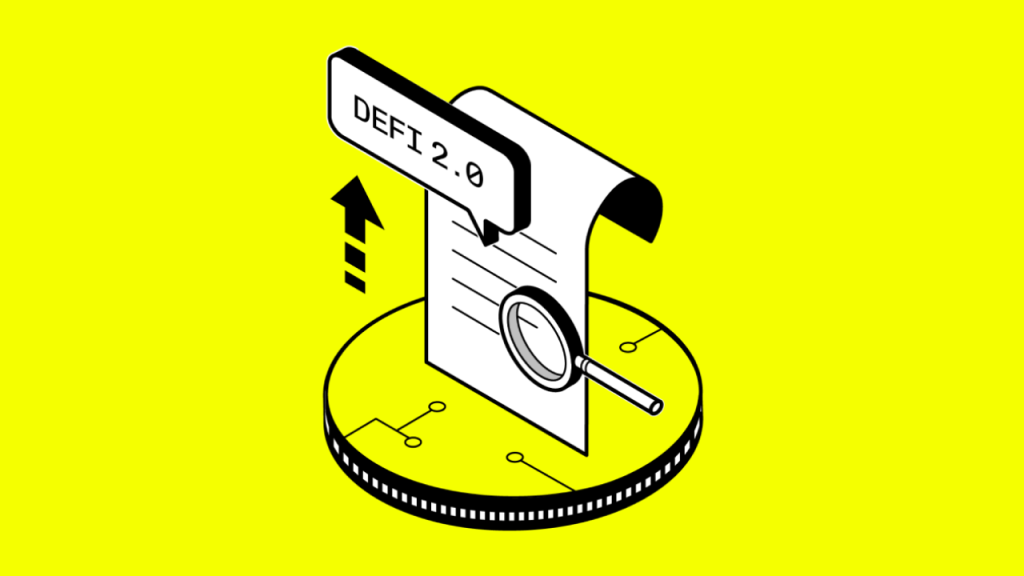Decentralized Finance (DeFi) revolutionized the financial industry by removing intermediaries and giving users direct control over their assets. However, the initial wave of DeFi—often referred to as DeFi 1.0—exposed scalability issues, unsustainable yields, and liquidity challenges. Now, DeFi 2.0 is emerging as a new phase of innovation aimed at addressing these limitations and making decentralized finance more efficient, secure, and user-friendly.
At EPIQ Trading Floor, we provide traders with the resources they need to navigate the evolving crypto landscape. Use code “BLOG” at checkout for 10% off and explore our platform with a risk-free 3-day trial. Cancel anytime within 72 hours without being charged.
What is DeFi 2.0?
DeFi 2.0 represents the next evolution of decentralized finance, focusing on improving liquidity, sustainability, and scalability. While DeFi 1.0 introduced groundbreaking concepts like decentralized exchanges (DEXs), lending protocols, and yield farming, many of these models struggled with issues like high transaction fees, overreliance on governance tokens, and capital inefficiency.
The next generation of DeFi projects aims to fix these weaknesses by introducing self-sustaining liquidity, improved security measures, and enhanced interoperability between blockchains. DeFi 2.0 is not about replacing the first wave but rather refining and expanding upon it.
Key Innovations in DeFi 2.0
DeFi 2.0 brings multiple improvements to the sector, making it more accessible and functional. Some of the most significant innovations include:
1. Liquidity Optimization
One of the biggest issues in DeFi 1.0 was capital inefficiency—users provided liquidity to pools but often faced impermanent loss when asset prices fluctuated. DeFi 2.0 introduces protocol-owned liquidity (POL) to ensure that projects maintain their own liquidity, reducing reliance on short-term liquidity providers.
Projects like OlympusDAO and Tokemak are pioneering this model, allowing protocols to own liquidity rather than rent it from users. This approach helps make DeFi platforms more resilient to capital flight.
2. Enhanced Security and Risk Management
DeFi’s early growth was accompanied by a wave of hacks, rug pulls, and smart contract exploits, leading to billions in losses. DeFi 2.0 aims to increase security through better smart contract auditing, decentralized insurance, and automated risk management solutions.
Protocols like InsurAce and Nexus Mutual offer decentralized insurance to protect DeFi users from exploits, adding an extra layer of security.
3. Cross-Chain Interoperability
DeFi 1.0 was largely fragmented, with Ethereum dominating but suffering from high gas fees. New developments in cross-chain compatibility allow users to move assets seamlessly between networks.
Layer-2 solutions like Arbitrum, Optimism, and zk-Rollups significantly reduce gas fees, while cross-chain bridges like Wormhole and Stargate Finance enable efficient asset transfers across blockchains.
4. More Sustainable Yield Farming
The first wave of DeFi was fueled by high-yield farming rewards, but these often led to unsustainable token emissions and eventual crashes. DeFi 2.0 is shifting toward real-yield models where rewards are generated from protocol revenue rather than inflationary token issuance.
Projects like GMX and Gains Network offer sustainable yields based on trading fees rather than new token minting, creating a more balanced economic model.
5. Smarter Governance and DAOs
Decentralized Autonomous Organizations (DAOs) play a crucial role in DeFi, but early governance models faced voter apathy and governance attacks. DeFi 2.0 improves governance by introducing dynamic voting systems, quadratic voting, and reputation-based governance models.
Platforms like Curve and Uniswap are experimenting with better incentive structures for active participants, ensuring that governance decisions align with the best interests of the protocol.

How DeFi 2.0 Impacts the Future of Crypto
The improvements introduced in DeFi 2.0 will make decentralized finance more accessible to mainstream users, reduce risks, and increase efficiency. With better liquidity models, reduced fees, and enhanced security, DeFi is set to attract institutional investors and traditional finance players looking for alternative yield opportunities.
Additionally, compliance and regulation are becoming key considerations. DeFi 2.0 projects are working on self-regulation frameworks to strike a balance between decentralization and legal requirements, ensuring long-term sustainability.
Is Now the Right Time to Invest in DeFi 2.0?
As DeFi evolves, traders and investors must stay ahead of trends. DeFi 2.0 projects offer significant upside potential, but they still carry risks. Conducting thorough research, assessing tokenomics, and understanding security measures are essential before investing in any project.

Master DeFi Trading with EPIQ Trading Floor
Staying ahead in the crypto markets requires access to real-time insights, expert guidance, and advanced trading tools. At EPIQ Trading Floor, we provide trade signals, market analysis, and educational resources to help traders succeed in DeFi and beyond.
Our exclusive mobile app offers one-on-one coaching, Member’s only livestreams, and actionable trade strategies. Use code “BLOG” at checkout for 10% off and try our services risk-free for 3 days. Cancel anytime within 72 hours without being charged.
Final Thoughts
DeFi 2.0 is reshaping decentralized finance by addressing the shortcomings of early DeFi protocols. With improved liquidity, cross-chain functionality, and enhanced security, this new wave of DeFi innovation is set to accelerate mainstream adoption. However, as with any financial opportunity, understanding the risks and opportunities is crucial.
Stay ahead of the curve—join EPIQ Trading Floor today and take your DeFi trading to the next level.
Disclaimer: This article is for educational purposes only and does not constitute financial advice. Cryptocurrency investments carry risks, and you should conduct your own research before making financial decisions.










Responses